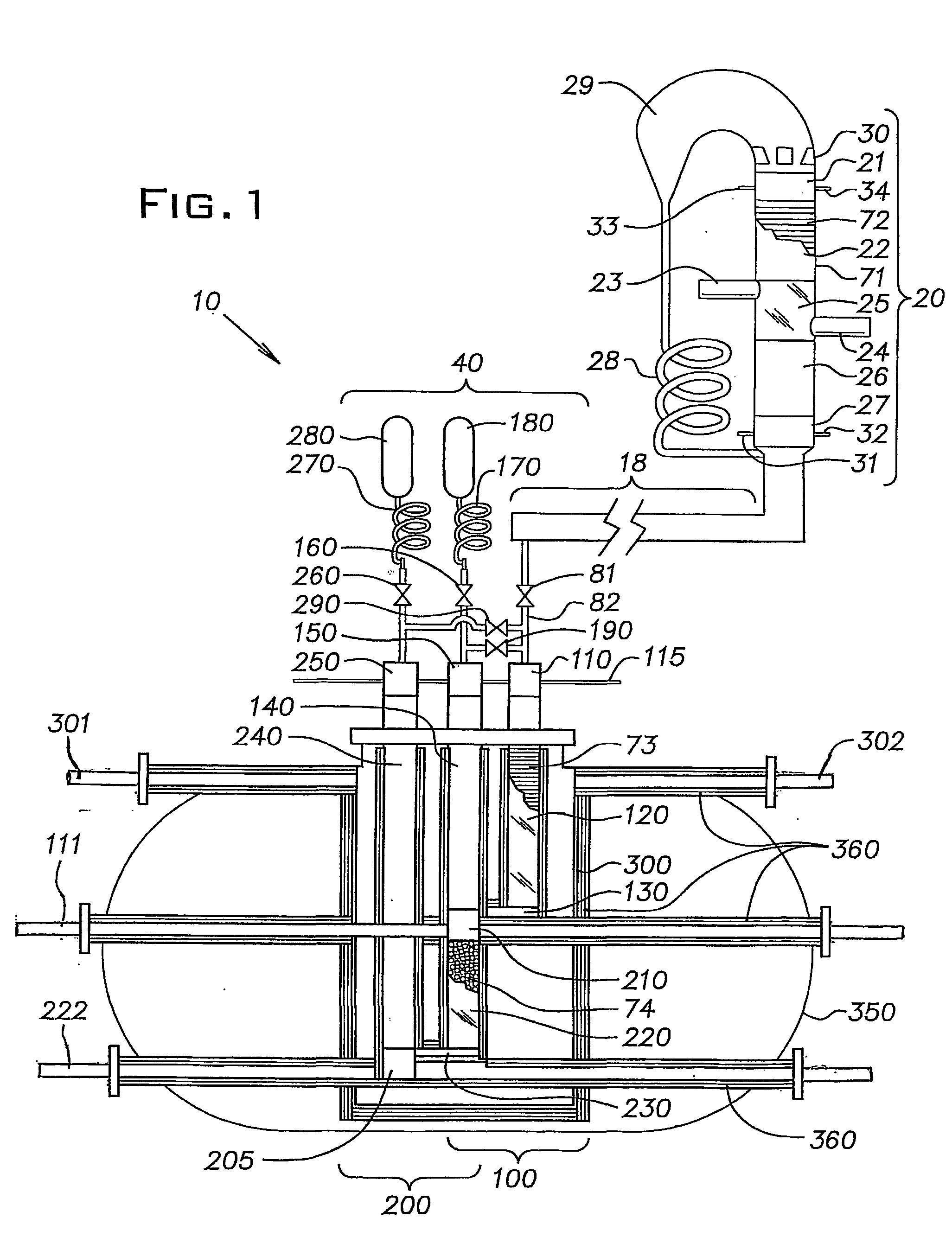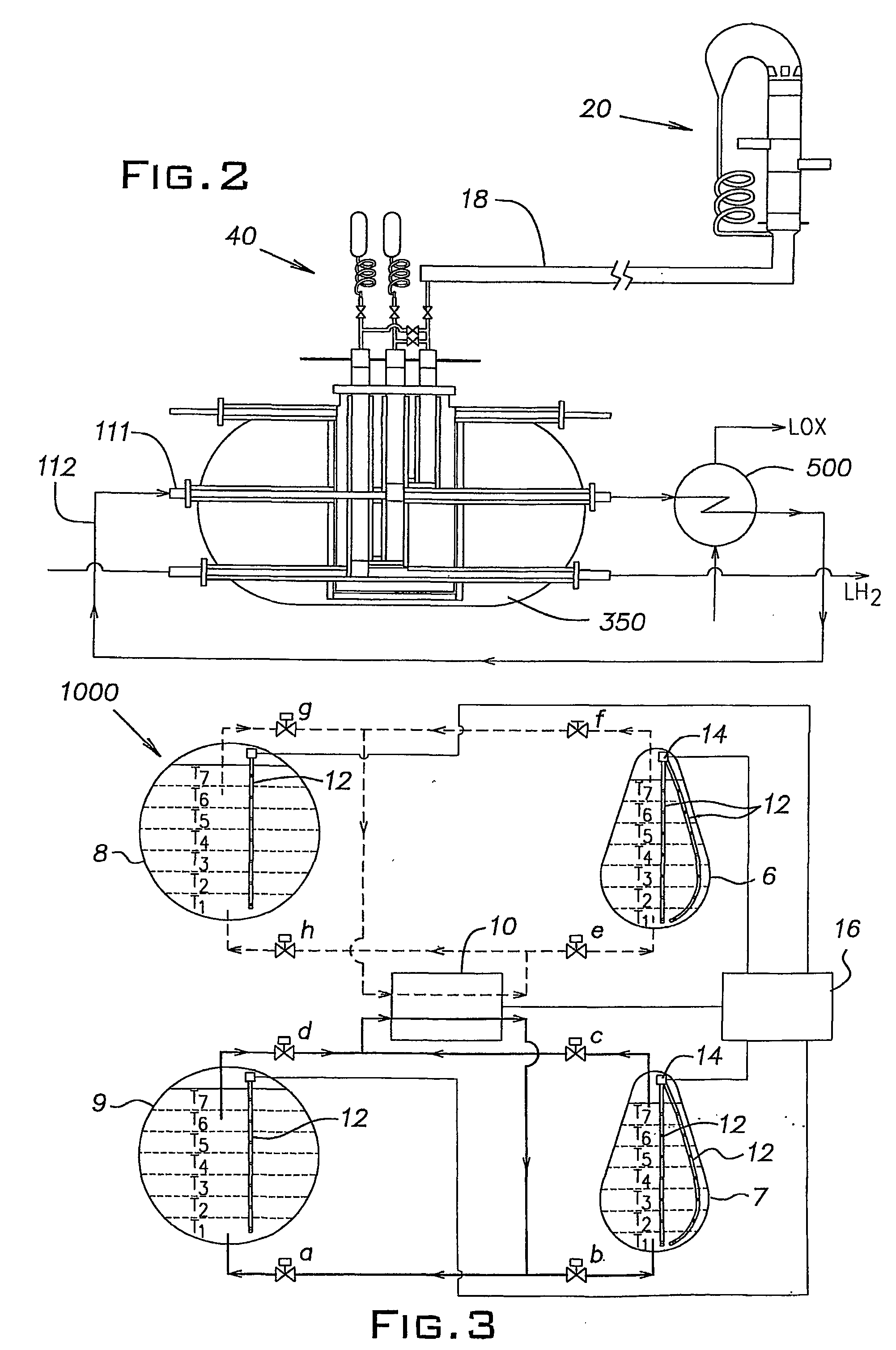Densifier for simultaneous conditioning of two cryogenic liquids
a densifier and cryogenic liquid technology, applied in domestic cooling apparatus, container discharge methods, lighting and heating apparatus, etc., can solve the problems of reducing the take-off weight and payload capacity, reducing the requirements of pressurizing gas, and affecting the current apparatus and techniques for densifying cryogenic propellants
- Summary
- Abstract
- Description
- Claims
- Application Information
AI Technical Summary
Problems solved by technology
Method used
Image
Examples
Embodiment Construction
[0023] As used herein, when a range such as 5 to 25 (or 5-25) is given, this means preferably at least 5, and separately independently, preferably not more than 25. Also as used herein, the porosity of a heat absorptive material used in a regenerator refers to the proportion of void volume over total volume of the regenerator. For example, porosity refers to the total void volume within the regenerator, taking into account both a) the porosity of the heat absorptive material itself, and b) the superficial void space within the regenerator that is not occupied by heat absorptive material packed or present therein. Unless otherwise specified, all components described herein are made from conventional materials in a conventional manner.
[0024] The invented densifier has three principal components; an oscillatory power source, a resonance tube 18, and a two-stage orifice pulse tube refrigerator (OPTR) 40. Referring to FIG. 1, a fully acoustic densifier 10 is shown having an acoustic heat...
PUM
 Login to View More
Login to View More Abstract
Description
Claims
Application Information
 Login to View More
Login to View More - R&D
- Intellectual Property
- Life Sciences
- Materials
- Tech Scout
- Unparalleled Data Quality
- Higher Quality Content
- 60% Fewer Hallucinations
Browse by: Latest US Patents, China's latest patents, Technical Efficacy Thesaurus, Application Domain, Technology Topic, Popular Technical Reports.
© 2025 PatSnap. All rights reserved.Legal|Privacy policy|Modern Slavery Act Transparency Statement|Sitemap|About US| Contact US: help@patsnap.com



